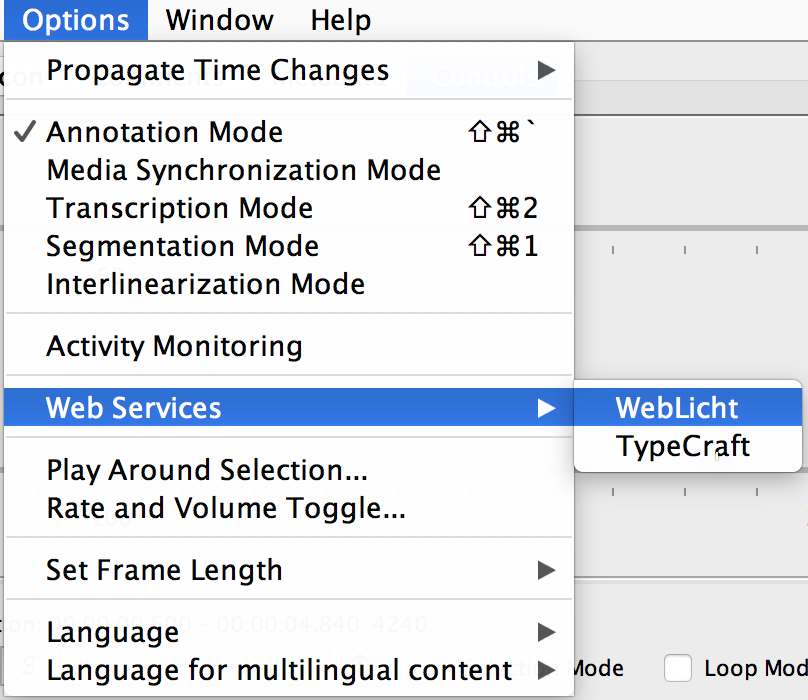There have been very succesful attempts to use morphosyntactic analysers under creation inside the Giellatekno language technology infrastructure for parsing and tagging transcribed data stored in ELAN. For instance, the Python scripts developed by Ciprian Gerstenberger et al. (originally used while working on Komi and Saami languages) call the locally installed tools and enhance ELAN files with the output of the analyser.
However, there are many situations where using locally installed software is problematic. Installing and maintaining the tools demand considerable technical knowledge, and some information should regularly move between users and developers. Ideally the software would be updated and critical information about the analysers' performance would move automatically without involvement of the users themselves. This would likele make the use of the Giellatekno analysers so effortless that the user base could grow.
This project uses Mika Hämäläinen's uralicNLP Python package to access Giellatekno's morphological and syntactic analysers.
In ELAN it is nowadays possible to call web applications, principally those within the WebLicht infrastructure. However, on the background ELAN sends some data as TCF XML file to the web application as a POST request, which returns to ELAN another similarly structured XML file.
Since it is possible to specify in ELAN an arbitrary URL for the service, it is easy to run other code and process the data as if it would had been sent to WebLicht.
The goal of this application is to demonstrate how this could be set up, although the current version doesn't completely work as intended yet. However, the idea seems to work and will be followed up in the near future. At the moment the script tries to insert for each word token only one lemma and one morphosyntactic analysis, as it is a bit unclear if the way TCF carries the information allows repeating everything, like our current elan-fst script does. There are some things that also probably are governed by how ELAN processes the information when it comes from the web application. Some of the open questions are:
- Can we receive tiers being defined as the type "symbolic subdivision" from the web application?
- This is needed when one form has several possible analysis
- Is it possible to control how the new tiers and linguistic types are named?
It could also be possible to set up in ELAN Java code a new Giellatekno selection under the Options > Web Services menu. Since the language of the tier seems to move between ELAN and Web Service, one could easily send all tiers of a specific type (utterance, transcription, text, tokens), and process those onward using the ISO language codes that are consistently used in the Giellatekno infrastructure.
The file examples/input_from_elan.xml is formatted as what ELAN sends to the application as a POST request. examples/output_to_elan.xml illustrates how the file (apparently) should be formatted in order to be put back into ELAN. The example ELAN file looks like this:
Then the content that ELAN knows how to work with looks like this:
<?xml version="1.0" encoding="UTF-8"?>
<D-Spin xmlns="http://www.dspin.de/data" version="0.4">
<MetaData xmlns="http://www.dspin.de/data/metadata">
<source></source>
<Services>
<CMD xmlns:xsi="http://www.w3.org/2001/XMLSchema-instance" xmlns="http://www.clarin.eu/cmd/" CMDVersion="1.1"
xsi:schemaLocation="http://www.clarin.eu/cmd/ http://catalog.clarin.eu/ds/ComponentRegistry/rest/registry/profiles/clarin.eu:cr1:p_1320657629623/xsd">
<Components>
<WebServiceToolChain>
<Toolchain>
<ToolInChain>
<PID>11858/00-1778-0000-0004-BA56-7</PID>
<Parameter name="version" value="0.4"></Parameter>
</ToolInChain>
</Toolchain>
</WebServiceToolChain>
</Components>
</CMD>
</Services>
</MetaData>
<TextCorpus xmlns="http://www.dspin.de/data/textcorpus" lang="de">
<sentences>
<sentence ID="s_0" tokenIDs="t_0 t_1 t_2"></sentence>
<sentence ID="s_1" tokenIDs="t_3 t_4"></sentence>
<sentence ID="s_3" tokenIDs="t_5 t_6"></sentence>
</sentences>
<tokens>
<token ID="t_0">Тайӧ</token>
<token ID="t_1">ӧтик</token>
<token ID="t_2">сёрникузя</token>
<token ID="t_3">тайӧ</token>
<token ID="t_4">мӧд</token>
<token ID="t_5">тайӧ</token>
<token ID="t_6">куймӧд</token>
</tokens>
<POStags tagset="stts">
<tag ID="pt_0" tokenIDs="t_0">sometag1</tag>
<tag ID="pt_1" tokenIDs="t_1">sometag2</tag>
<tag ID="pt_2" tokenIDs="t_2">sometag3</tag>
<tag ID="pt_3" tokenIDs="t_3">sometag4</tag>
<tag ID="pt_4" tokenIDs="t_4">sometag5</tag>
<tag ID="pt_5" tokenIDs="t_5">sometag6</tag>
<tag ID="pt_6" tokenIDs="t_6">sometag7</tag>
</POStags>
</TextCorpus>
</D-Spin>
The web application takes the annotations through uralicNLP, and restructures the result into XML that looks like one above. This brings into ELAN following annotations:
The content itself could of course be anything, so there are many possibilities to integrate this into different tools.
Just run in the project folder:
FLASK_APP=elan_app.py flask run
If everything is ok, you should see:
* Serving Flask app "elan_app"
* Running on http://127.0.0.1:5000/ (Press CTRL+C to quit)
After this you can point in ELAN's Options > Web Services > WebLicht menu the web service to be called from the address http://127.0.0.1:5000/. The idea is that the application would also do tokenization, so select a tier containing utterances. Once everything works the URL would be somewhere else, and the user wouldn't need to care about anything.
- It's worth inspecting what happens in ELAN's own code when the input and output are processed.
- A lot is happening i.e. in
src/main/java/mpi/eudico/webserviceclient/weblicht/TCFtoTranscription.java
- A lot is happening i.e. in
- I'm not sure what is happening with tokenization in the file that ELAN sends.
- The language tag in ELAN's tier configuration is apparently somehow transferred to the web service -- but how can we access and utilize this metadata for automatic pointing to the respective analyzer in Giellatekno?
- Application could be running somewhere on an actual server
- How can this be registrated in WebLicht so that it appears in menu automatically?
- Niko Partanen
- Michael Rießler
The code builds considerably on earlier work by:
- Ciprian Gerstenberger et al. (2018) ELAN-FST script. https://github.com/langdoc/elan-fst
- Mika Hämäläinen (2018, January 9) UralicNLP (Version v1.0). Zenodo. http://doi.org/10.5281/zenodo.1143638



